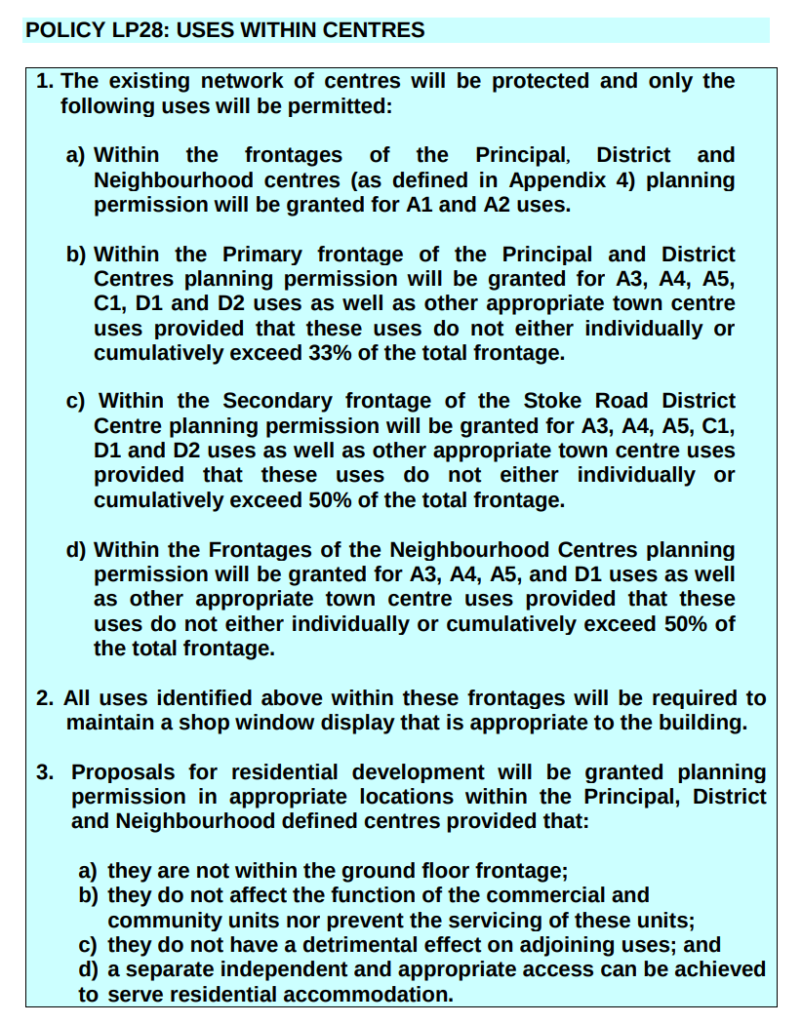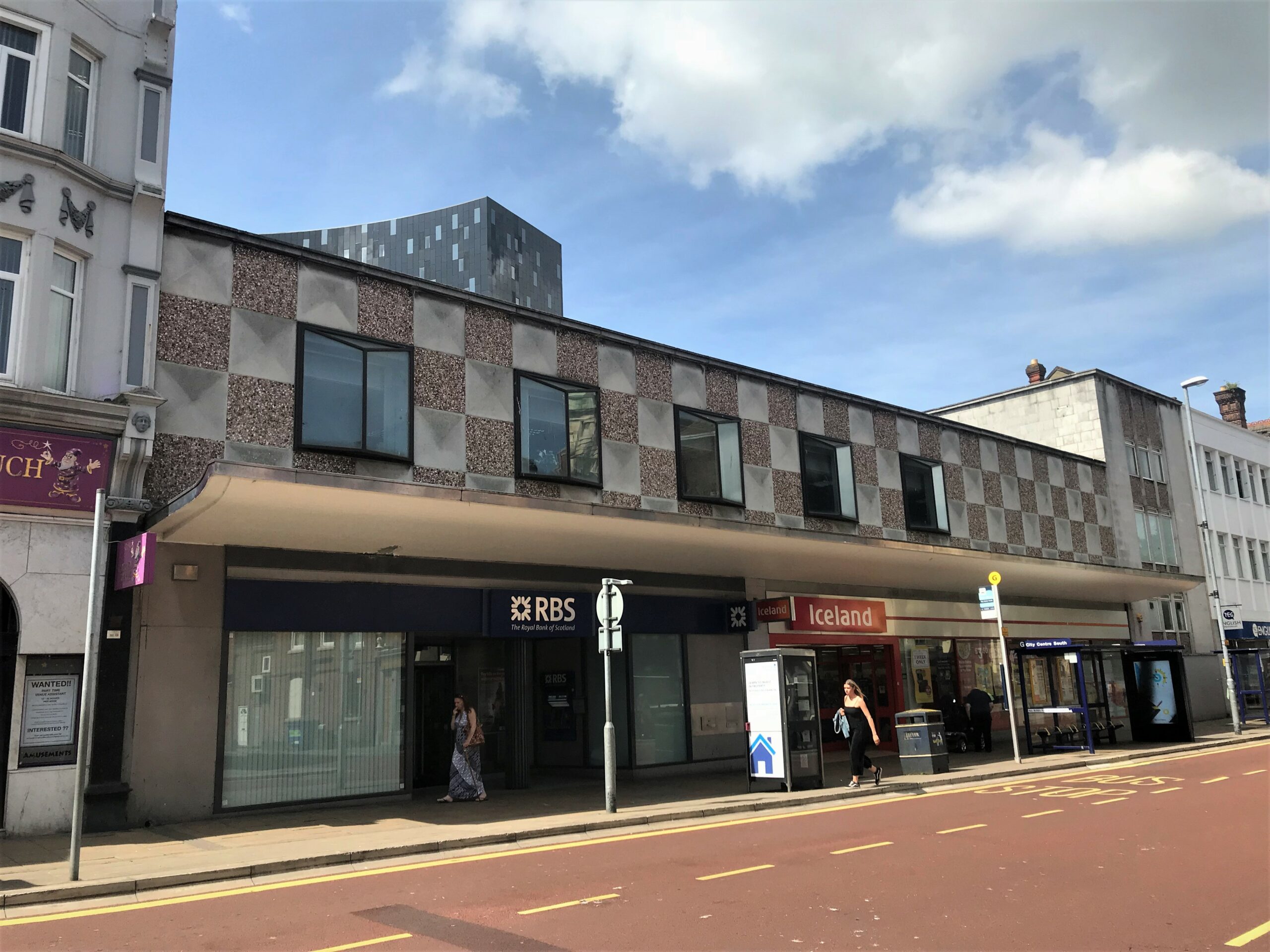Its 1948 and the UK is preparing its first batch of local plans. Each document sets out the council’s vision for this brave new world of development regulation however buried in the heart of each lies a policy which at its heart would lead to stagnation. Moving onto to 2020 and that very same policy has lead to massive interventions by Central Government, the biggest shake up of the Use Classes Order since 1972 and at least 1 judicial review.
The policy looked something like this:

Those percentage based policies of the 1940’s and 50’s have persisted all the way through to 2020 placing a stranglehold on principal, district and local centres and preventing other viable economic uses to gain any form of traction. The policy above is from the 2019 Gosport Local Plan and is one of 100’s of such policy types that seek to perpetuate the myth that the High Street is the domain of the retail shop.
In a surprisingly forward thinking move the Government in 2020 chose to break this stranglehold. In its press release in September it said:
As we protect and grow our economy post covid, we must think flexibly about how best to support our high streets and town centres. These changes will give high streets the ability to adapt quickly to new uses where they might be greater value, or to change into housing in due course. This gives the high streets and our town centres the best chance of adapting and thriving, but we are protecting uses which bring unique benefits, like local pubs – and local authorities will still be able to control use changes that might bring nuisance to the community – like betting shops.
https://www.gov.uk/government/publications/permitted-development-rights-and-changes-to-the-use-classes-order/flexible-use-on-the-high-street-key-facts-brief
We reflected upon the broad changes that Class E would bring in our last post which you can read here.
The question I think we should all ask at this stage is….is it all too late?
2018, 19 and 20 have been death knell years for retailers on the high street as consumer choice and spending behaviour moves from physical stores to online. In December 2019 the BBC reported on the surprising number of brands that faced the axe. 2020 has not been kinder with Arcadia Group and Debenhams now facing closure leaving massive holes within the High Street.
As a Chartered Town Planner and having dealt with the question of retail development on both sides I sadly report that Planning Authorities are partly to blame for the demise of the high street experience. The glory days of the 50’s and 60’s where you went to the High Street for everything are long gone but the Councillor’s who sign off of new policies in the Local Plan are not and are of a generation where there is still some misty eyed optimism that the High Street will recover.
This optimism is infectious and is transmitted by some form of miasma to our Planning Officers, in a recent discussion with Planners in Luton they were somehow still of the opinion that they had control of the High Street and the uses within it, even given the lack of control now afforded by Class E.
It is hoped that the LPA’s will now seek to embrace the new flex-abilities afforded by the new Use Classes Order and rip-up they town centre policies which have been made brutally irrelevant. Sadly however I think that there is more to come in the tale of the Town Centre.


